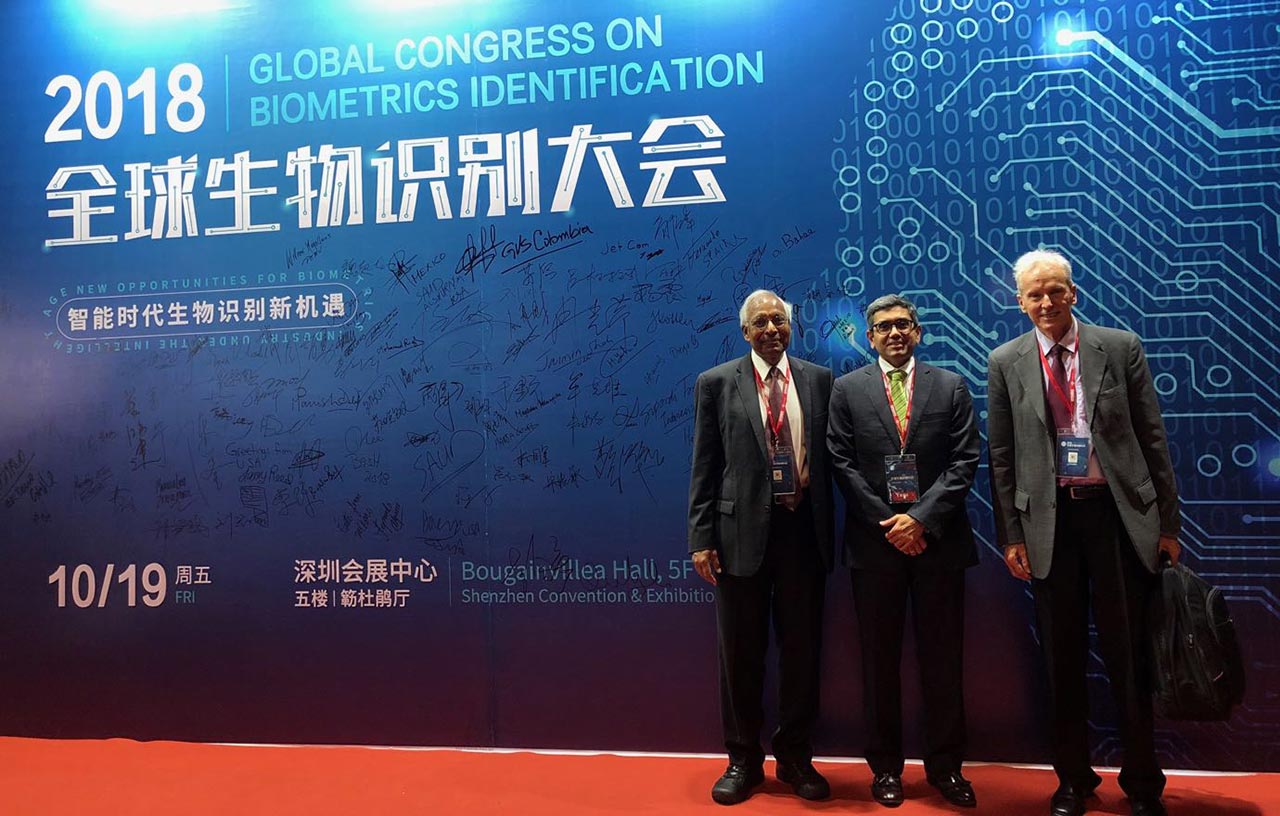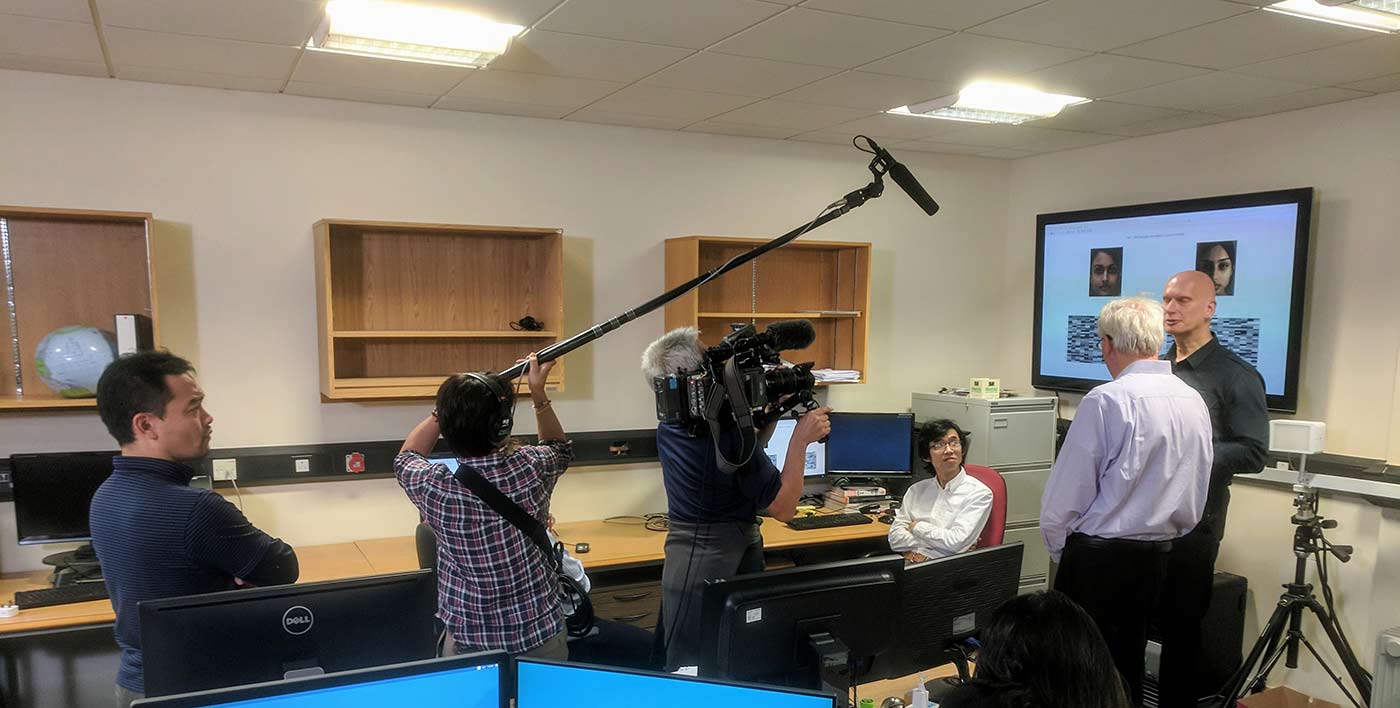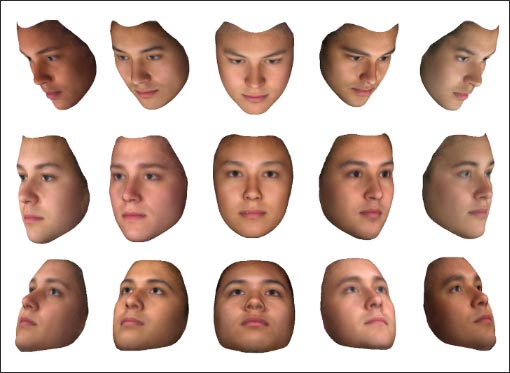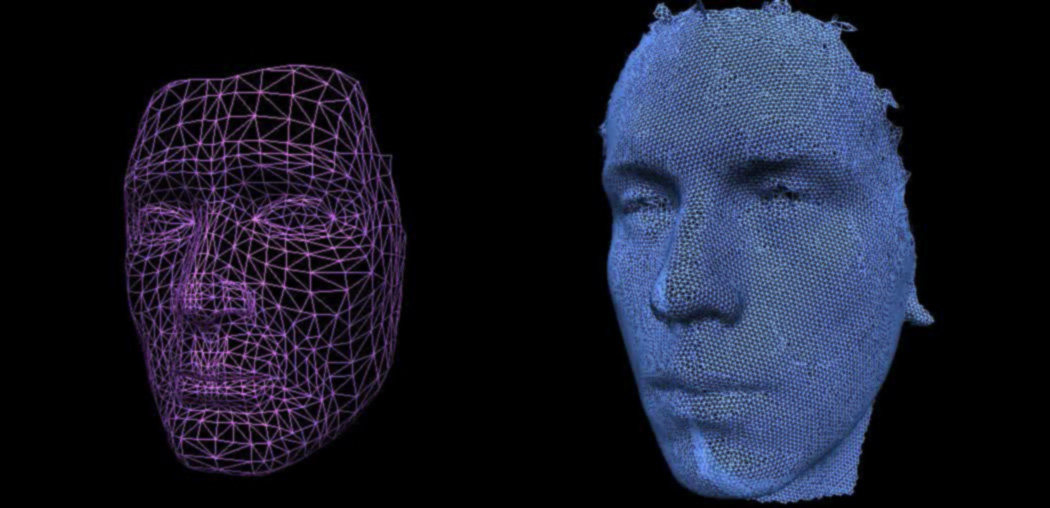Invited Talks/ Events
11 Posts
IEEE FG 2018 Workshop on Dense 3D Reconstruction of 2D Face Images in the Wild
Dr Zhenhua Feng | 2018
The event was organized in Xi'an, China. Read more..
Semantic Scene Interpretation
Josef Kittler on Invited Talks | 20 Oct 2018
Professor Josef Kittler presented an invited talk on Semantic Scene Interpretation at the Decentralised Computing and Applications in Business, Science and Engineering 2018 conference held at Jiangnan University, Wuxi, China on 20-21 October 2018.

Multimodal and Cross-modal Person Re-identification
Prof Josef Kittler, at Global Congress on Biometric Identification 2018, Shenzhen, China | 19 Oct 2018
Professor Josef Kittler attended Global Congress on Biometric Identification 2018 held at Shenzhen, China on 19 October where he presented a key note talk on Multimodal and cross-modal person re-identification.
Unconstrained Face Recognition at the EAB
Josef Kittler on Invited Talks | 26 Sep 2018
Prof Josef Kittler presented the EPSRC funded FACER2VM project on unconstrained face recognition at a joint meeting of the European Association for Biometrics (EAB) and the German Teletrust Biometrics Working Group held in Darmstadt on 26 September.
This was part of the FACER2VM User Group information dissemination activity facilitated by EAB, a FACER2VM project partner.
Face and soft biometrics recognition for smart cities applications
Josef Kittler on Invited Talks | 19 Sep 2018
Prof Josef Kittler participated in the 3rd IEEE International Smart Cities Conference held at Jiangnan University, Wuxi, China on 14-17 September 2017. He presented a keynote talk on "Face and soft biometrics recognition for smart cities applications”. He was involved in the conference organisation as an Advisory Chair.

NHK Filming in CVSSP
Dr Chi-Ho Chan, Prof Josef Kittler, Dr Paul Koppen, Dr Muhammad Rana | Oct 2017
During the weekend, the Japanese TV Broadcaster NHK came to film an experiment in face matching, comparing the performance of our face recognition system with that of a super recogniser, an individual with exceptional ability to recognise faces, whose company provides services to the UK police in analysing CCTV videos. The aim of the filming was to produce material for a programme on the human brain which NHK are putting together for broadcast in February next year, with an English version to follow three months later.
Our system completed the test designed by Dr Josh Davis, a psychologist from Greenwich University, with flying colours. Huge thanks to Chi-Ho Chan, the system designer, for his effort to develop a lot of support software over the weekend to make our participation in the experiment possible, and for the help of everybody else involved in the filming one way or another.
Facial Recognition for Enhanced Security Applications
Josef Kittler on Invited Talks | 07 Jan 2017
Professor Kittler visited New York University of Abu Dhabi (NYUAD) in the United Arab Emirates where he presented a keynote lecture on “Facial Recognition for Enhanced Security Applications” on 7 January 2017.
The invited talk was opened to general public. It attracted a wide audience of researchers and practitioners interested in face biometrics, from a diverse field of applications including banking, and dental and cosmetic surgery.
The lecture also opened the IEEE SPS Winter School on Security and Privacy in Biometrics held at NYUAD on 8-12 January.

3D Morphable Face Model and its Applications (at AMDO 2016)
Josef Kittler on Publications, Invited Talks | 18 Jul 2016
Professor Josef Kittler presented an invited paper on 3D morphable face model and its applications at the International Conference on Articulated Motion and Deformable Models 2016, held at Palma, Mallorca during 13-15 July 2016.
The talk gave him an opportunity to present the EPSRC FACER2VM project in unconstrained face recognition to the conference audience.

Tutorial at ICB 2016 about the 3D Morphable Face Model and its applications.
Prof Josef Kittler, Dr Paul Koppen | June 2016
3D Morphable Face Models (3DMM) have been used in face recognition for some time now. They can be applied in their own right as a basis for 3D face recognition and analysis involving 3D face data. However their prevalent use over the last decade has been as a versatile tool in 2D face recognition to normalise pose, illumination and expression of 2D face images.
It has the generative capacity to augment the training and test databases for various 2D face processing related tasks. It can expand the gallery set for pose invariant face matching. For any 2D face image it can furnish complementary information, in terms of its 3D face shape and texture. It can also aid multiple frame fusion by providing the means of registering a set of 2D images
A key enabling technology for this versatility is 3D face model to 2D face image fitting.
The recent developments in 3D model to 2D image fitting will be discussed. They include the use of symmetry to improve the accuracy of illumination estimation, multistage close form fitting to accelerate the fitting process, modifying the imaging model to cope with 2D images of low resolution, and building albedo 3DMM.
These various enhancements were overviewed and their merit demonstrated on a number of face analysis related problems.
Event on Advancements in Face Research: A Conversation Between Humans and Machines
Prof Josef Kittler, Dr Paul Koppen, Dr Zhenhua Feng at Manchester Metropolitan University Business School - All Saints Campus Oxford Road, Manchester, M156BH | June 2016
The event covered new and emerging techniques in the area of face research and analysis, providing a means of discussing research to get feedback from similar fields. This also provided with an opportunity to brain storm ideas on how to further the current state of the art.

Extending NMF to 3D Registered Data
Dr Paul Koppen, Paper accepted for ICB 2016 on extending non-negative matrix factorisation to 3D data. | June 2016
The use of non-negative matrix factorisation (NMF) on 2D face images has been shown to result in sparse feature vectors that encode for local patches on the face, and thus provides a statistically justified approach to learning parts from wholes.
However successful on 2D images, the method has so far not been extended to 3D images. The main reason for this is that 3D space is a continuum and so it is not apparent how to represent 3D coordinates in a non-negative fashion.
This work compares different non-negative representations for spatial coordinates, and demonstrates that not all non-negative representations are suitable.